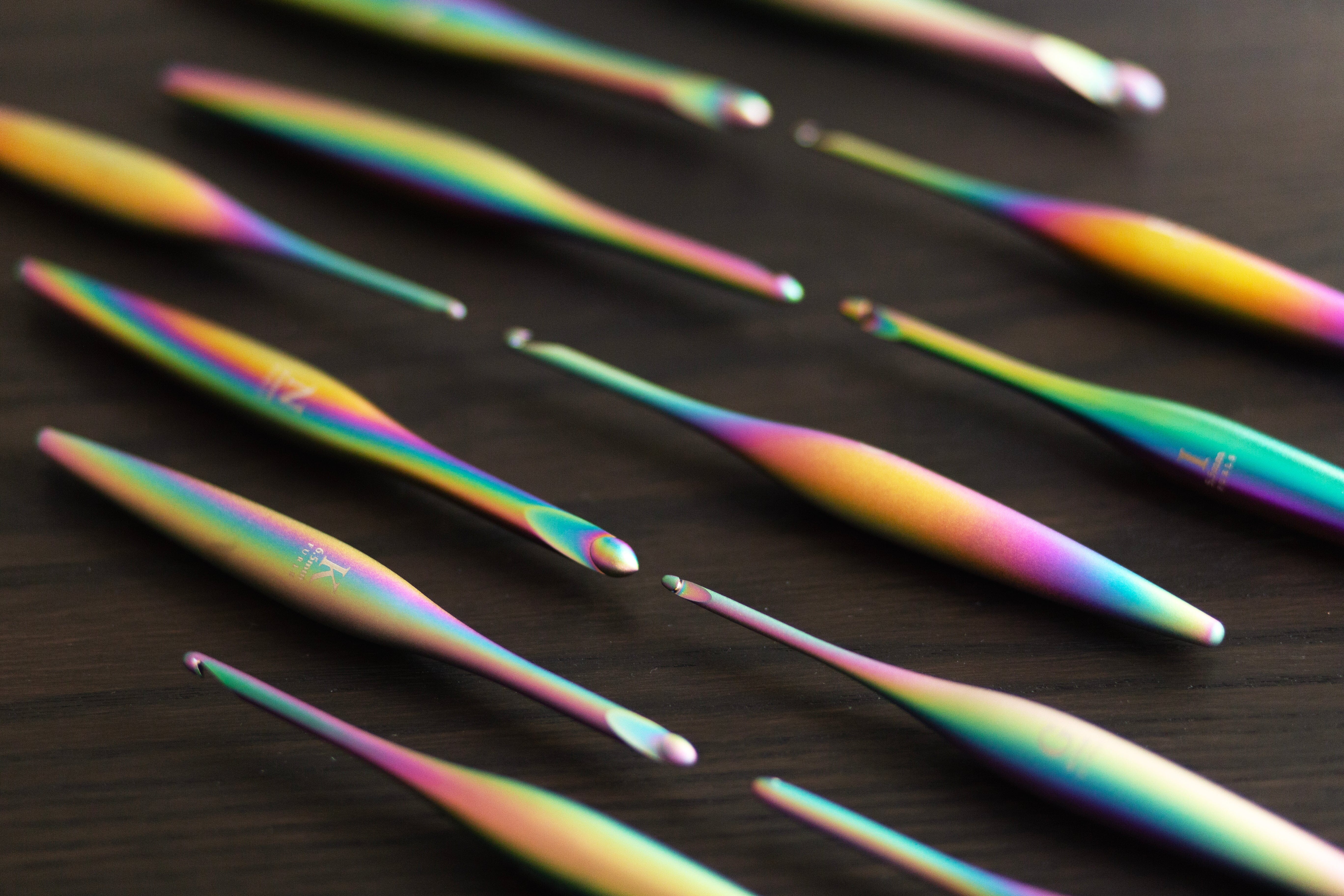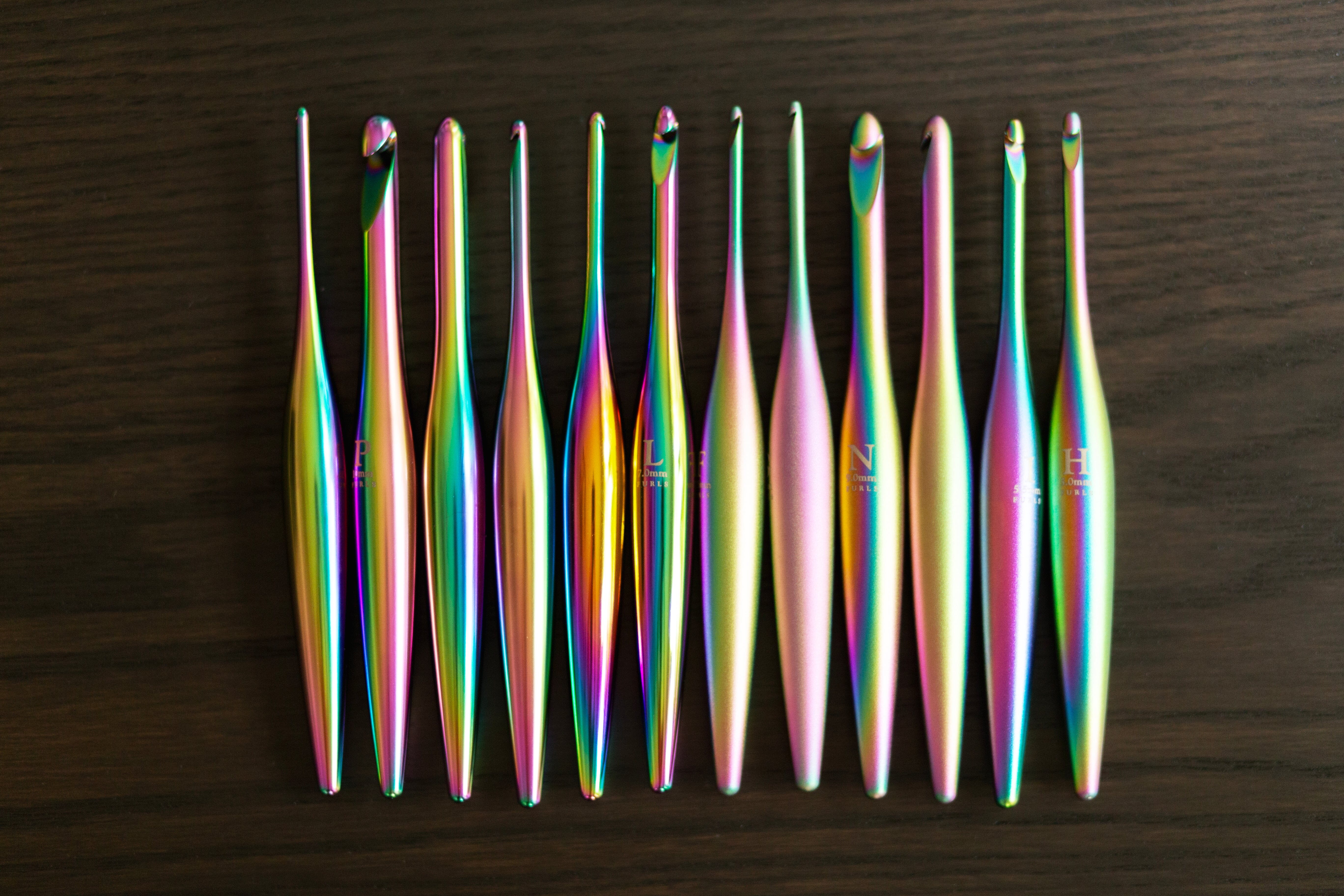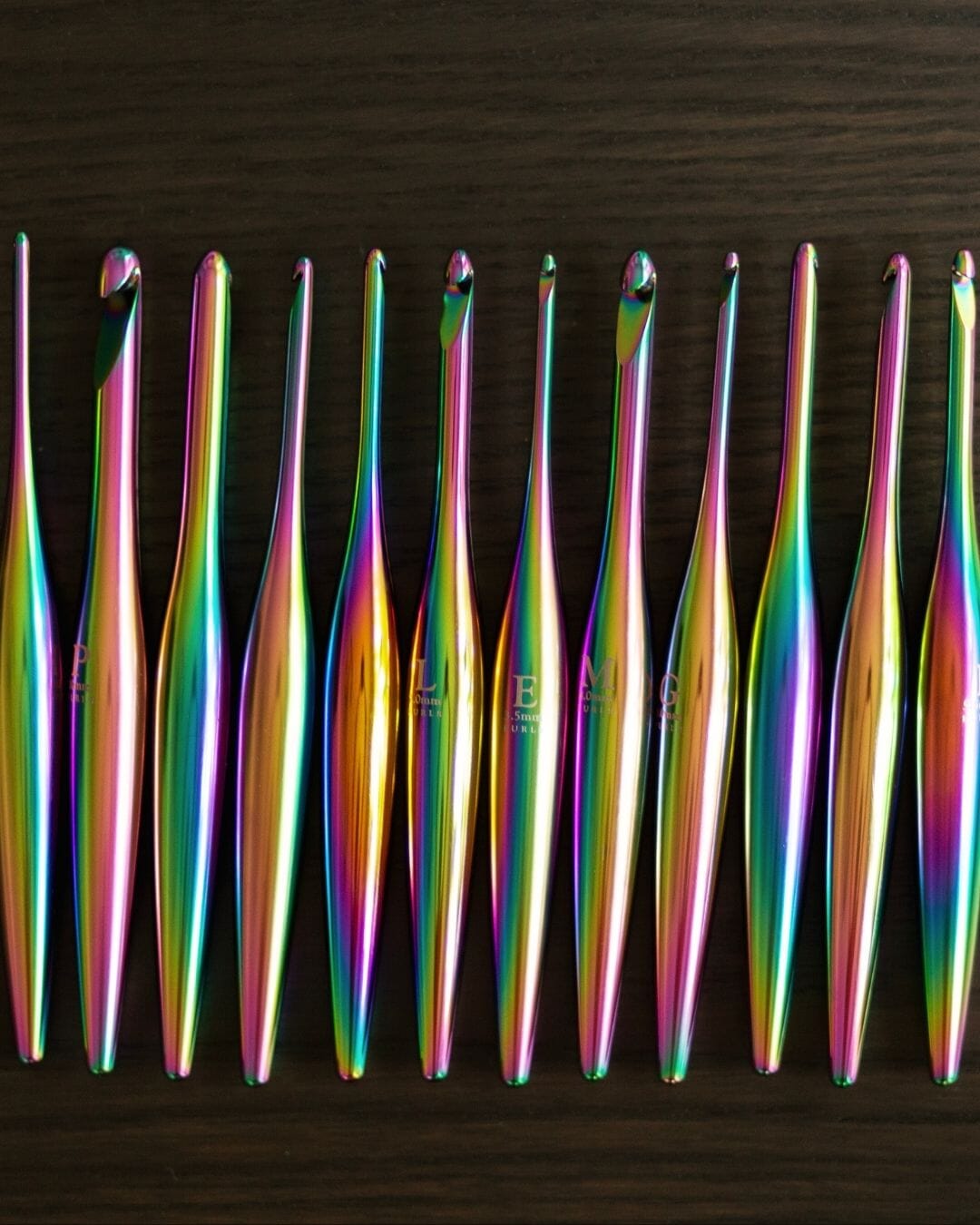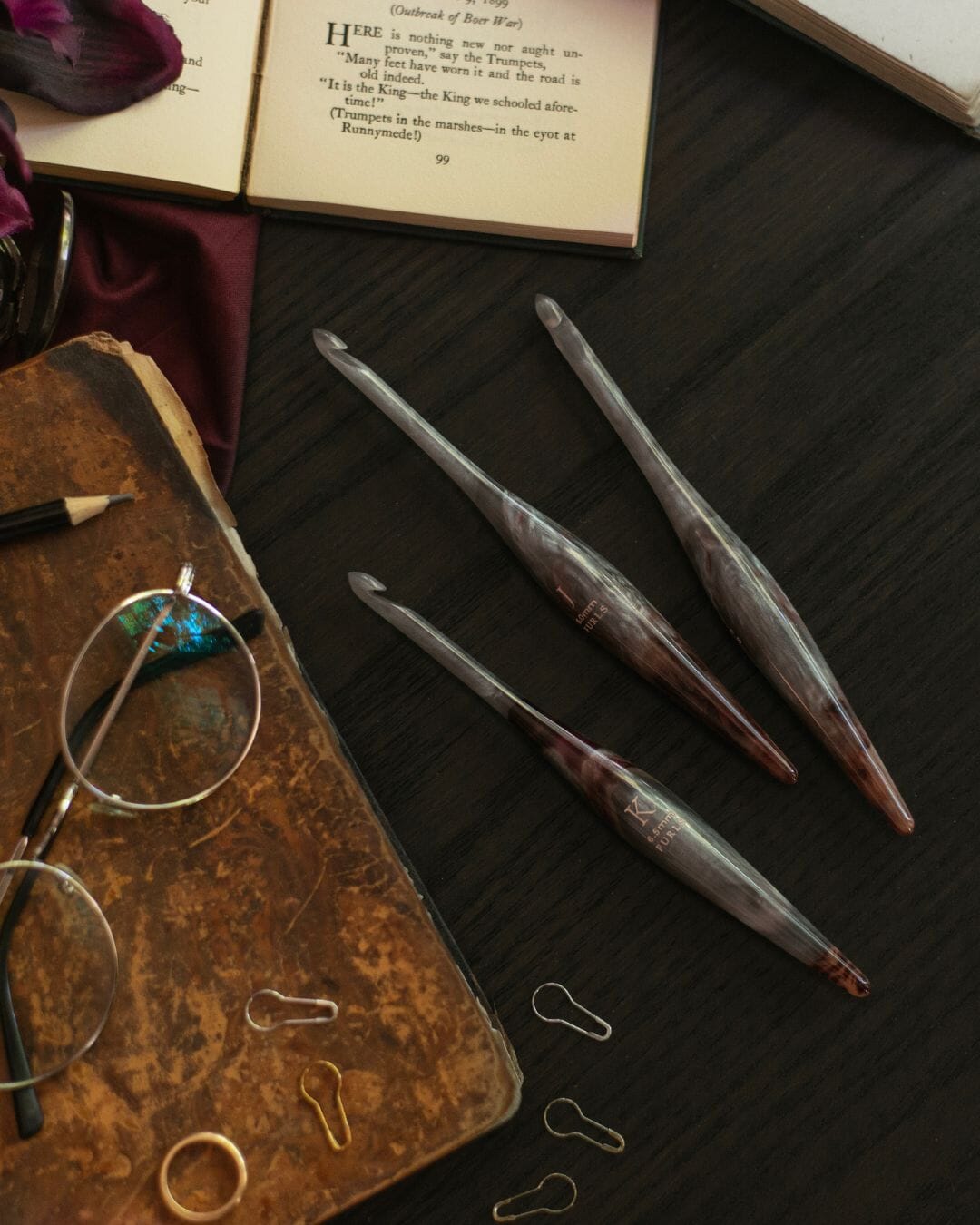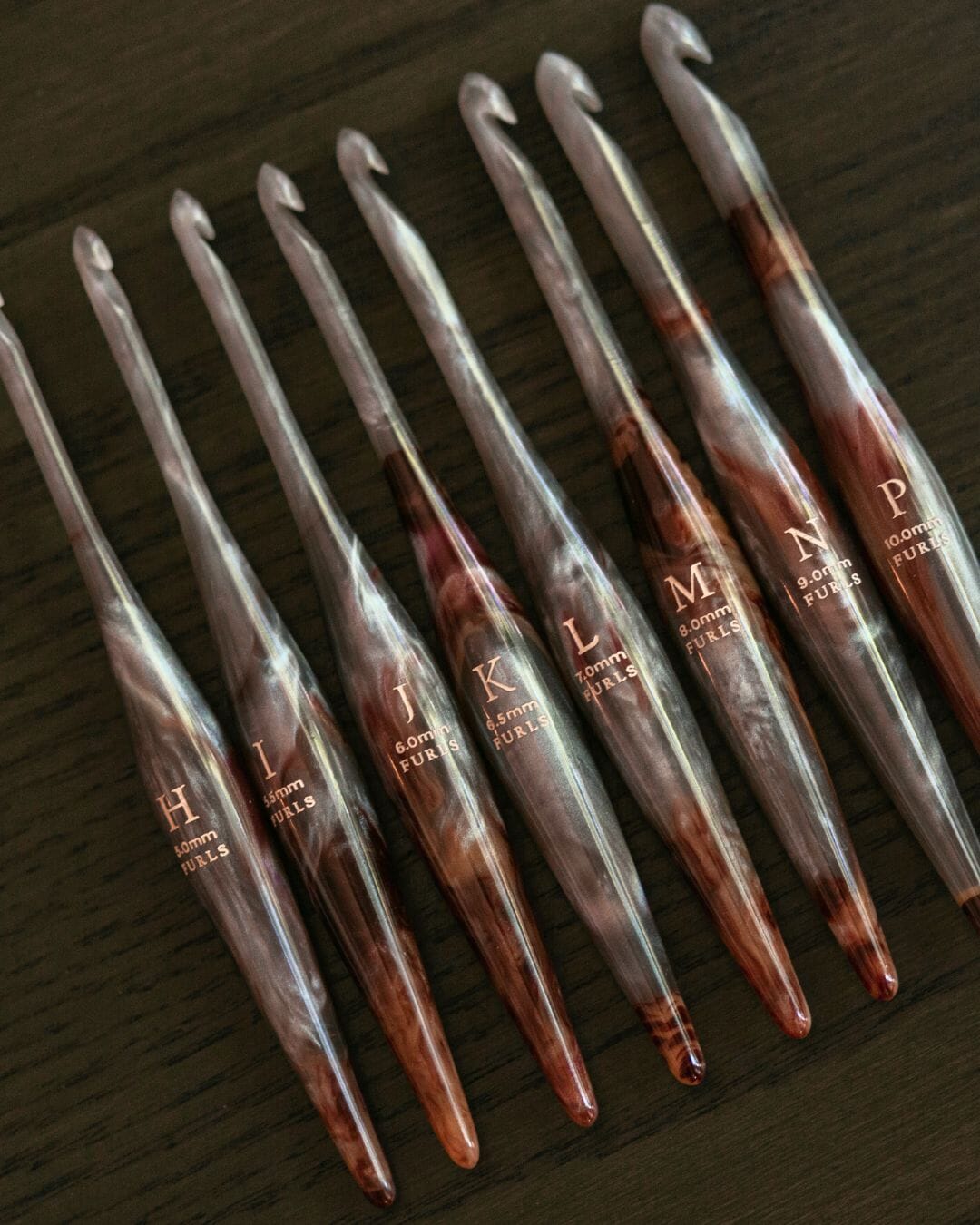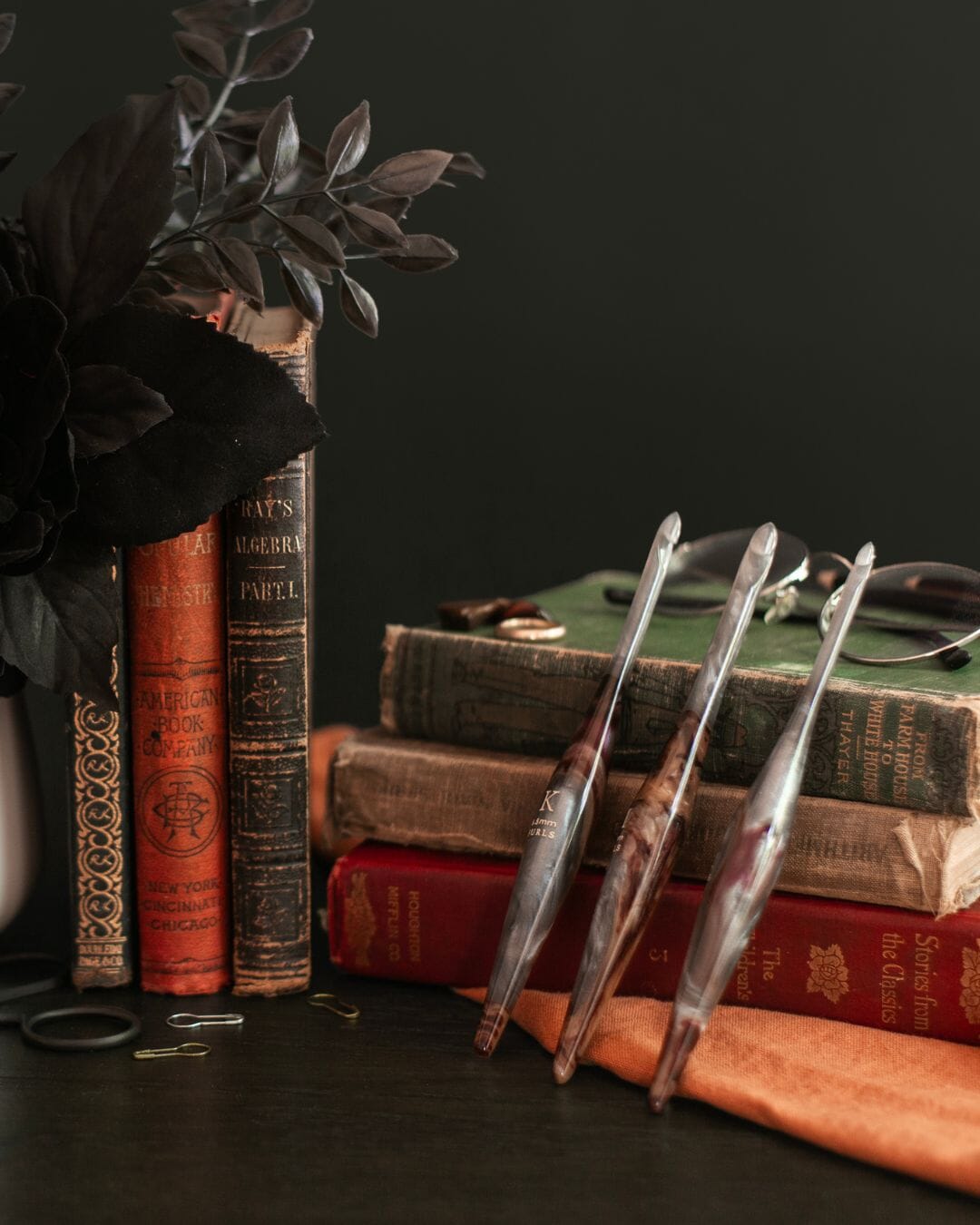Crochet hooks come in many different sizes, and knowing the exact size of your hook can make a big difference in your projects. Whether you're following a pattern or designing your own, using the correct hook size (along with correct crochet gauge) ensures your stitches are just right. Let’s dive into the world of crochet hooks and learn how to measure them accurately!

Hook Overview
Crochet hooks are the tools of our trade, and their size can greatly affect the outcome of our work. The size of the hook determines the size of the stitches, and ultimately, the size and texture of the finished project. Knowing your hook size is crucial for maintaining consistency and achieving the desired fit and look of your creations.

Types of Crochet Hooks
Crochet hooks can be made from various materials including metal, resin, wood, and so on. Each material has its own feel and impact on your crocheting experience. Additionally, there are different styles of hooks, primarily inline and tapered. Inline hooks have a consistent diameter along the head and shaft (helps in keeping stitches consistently sized), while tapered hooks have a slightly tapered head and narrower throat (allowing you to insert the hook with ease). Furls hooks are a unique hybrid of inline and tapered, so you get the best of both worlds: ease of insertion and uniformity of stitches!
Every manufacturer’s hooks will vary slightly in measurement from other manufacturers. Although knowing your crochet hook size is important, be aware that your crochet gauge affects your project size as much (or even more) than your hook measurement. Crochet patterns usually give a suggested hook size that matches the designer’s personal gauge, but your crochet gauge might vary enough to make a sizing difference, which is why gauge swatches are recommended and so important!

Furls Streamline Metal hooks are machined, which means they are consistently sized from hook to hook, while Furls Streamline Resin hooks are fully handmade, which means there is a very small variance from hook to hook.
Measurement Systems
When it comes to measuring crochet hooks, there are three main systems:
- Metric System: Measures in millimeters (mm), and is the most precise.
- US System: Uses letters (B to Q) and numbers.
- UK System: Utilizes numbers, which can sometimes differ from the US system.
Furls hooks display a combination of the US letter system + millimeters, and our hooks are usually labeled with both.
Other crochet hook manufacturers may not use the same system as Furls, and hooks can vary slightly from brand to brand. When in doubt, match up the millimeter measurement of your hook to the suggested hook size in your pattern, making hook size adjustments as needed to account for your personal crochet gauge.
Tools for Measuring
There are a few tools you can use to measure your crochet hook:
- Crochet Hook Gauge Tool: A small tool with slots of various sizes to fit the hook through. Note: Avoid the knitting-style gauges that use drilled holes (only some crochet hook heads fit through those holes accurately!) and look for the slotted type instead.
- Calipers: Digital or manual, calipers measure the diameter of the hook shaft.
- Ruler/Tape Measure: A quick and accessible method for a rough measurement.

Using a Crochet Hook Gauge:
- Insert the hook into the gauge slot at the working section of the shaft.
- Identify the correct size when the hook fits snugly without forcing.

Using Calipers:
Note: use care with calipers, as some types can scratch your hook.
- Measure the diameter of the shaft (the part between the handle and the hook).
- Read the measurement in millimeters.
Note: Digital calipers have different levels of accuracy depending on the device, so check your calipers' manual to find out the accuracy of your device before you begin. We have found that the most accurate calipers can have an accuracy of +/- 0.02mm. Calipers that have +/- 0.2mm tolerance may not measure accurately enough, since Furls' quality assurance tolerance (for resin) is +/- 0.25mm.
Using a Ruler/Tape Measure:
- Align the hook shaft with the ruler's metric side.
- Note the measurement at the widest part of the shaft.

Tips and Tricks
- Consistency: Stick to one measurement method to ensure consistent results.
- Hook Wear and Tear: Regularly check your hooks for wear, as this can affect their size and your gauge.
- Hook Brands: Be aware that sizes can vary slightly between different brands, or from hook to hook in Streamline Resin or Wood hooks.
- When starting a project, make a gauge swatch according to pattern instructions to ensure your final project results in the correct size of item. Adjust your crochet hook size accordingly to achieve the desired results. Read "Understanding Crochet Gauge" for more info.
Common Mistakes to Avoid
- Measuring the Wrong Part: Always measure the shaft, not the throat or handle.
- Using Inconsistent Tools: Stick to one method to avoid discrepancies.
- Ignoring Hook Variations: Different materials and brands can affect your measurements and gauge.
Conclusion
Measuring your crochet hooks accurately is essential for creating beautiful, well-fitted projects. Regularly checking your hooks and maintaining consistency in your measurements will help ensure your stitches are always on point. So grab your hooks, choose your measuring tool, and start checking those sizes.
Be Aware of Gauge
And remember: although knowing your crochet hook size is important, know that your crochet gauge affects your project size as much (or even more) than your hook measurement. Crochet patterns usually give a suggested hook size that matches the designer’s personal gauge, but your crochet gauge might vary enough to make a sizing difference, which is why gauge swatches are recommended and so important!
Learn more: Understanding Crochet Gauge






